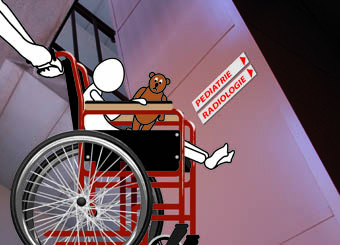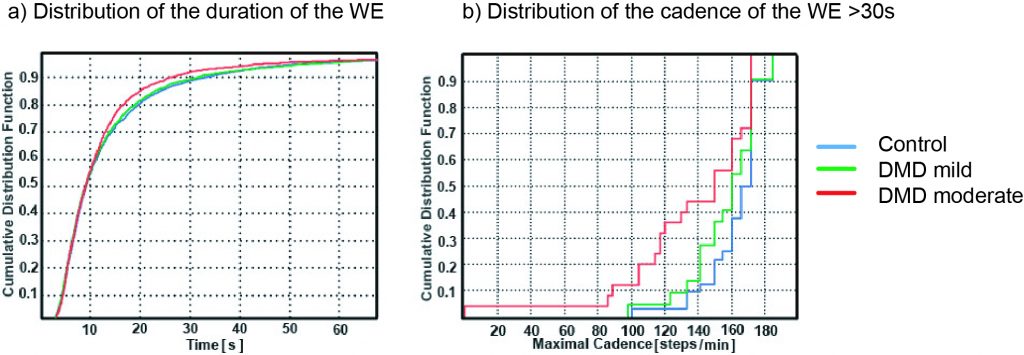Functional ability monitoring in Duchene muscular dystrophy using a kinematik sensor in home environment
- Contact person: Anisoara Ionescu
- People involved: Anisoara Ionescu
- Partners: Telethon Action Suisse
- Funding source:
Overview
Duchenne muscular dystrophy (DMD) is an X-linked recessive disease which produces unique alterations of gait and posture, and early mobility dependence upon a wheelchair. Considering the abnormal trend of ambulation in DMD children, ambulatory gait and posture analysis can provide relevant outcomes with regard to the progression of the disease and to the benefits of a therapy.
The ambulatory systems offer the advantage of being relatively inexpensive, easy to integrate into the clinical routine, and to allow the quantification of the gait and daily-life physical activity pattern over long periods, bringing to light the characteristics of the real-life conditions
The objectives of this research are:
Clinically – to define how the daily physical activity of these patients varies with the disease severity and to measure the treatment impact on children’s physical activity.
Technically – to quantify functional mobility in daily living conditions in children with DMD using body fixed inertial sensors.
Methods
In order to record body movement during gait, two non-commercialized miniaturized dataloggers (ASUR, Autonomous Sensing Unit Recorder, 55x40x18mm, 50g) were fixed on each shank of the subject and a datalogger (Physilog®, BioAGM, CH) was attached on the subject’s trunk. The system on the trunk was attached during daily life measurements.
Monitoring Systems
|
Measurement protocol
|
SubjectsThree groups of children were enrolled:
|
a) Objective outcomes – gait pattern: Stride length (SL), Shank peak angular velocity(SPAV), Stride velocity (SV), Cadence (Cad), Double support (DS)
b) Objective outcomes – physical activity pattern
-Daily Posture Allocation, time spent (%): walking , on feet (walking + standing), sitting, lying
-Characterization of walking episodes (WE): Distribution of the duration of the WE, Distribution of the maximal cadence of the WE >30s
Results
Journal Papers
- Gait Assessment in Duchenne Muscular Dystrophy Children during Long-Distance Walking, R. Ganea, P. Y. Jeannet, N. Goemans, A. Paraschiv-Ionescu, N.M. Goemans, C. Piot, M. Van den Hauwe, K. Aminian. Journal of Child Neurology, 2011, in press.
Conference Proceedings
- Detailed analysis of daily-life physical activity patterns in DMD children, Jeannet P., Ganea R., Piot C., Goemans N., van den Hauwe M., Aminian K., Paraschiv-Ionescu A., Neuromuscular Disorders, Volume 19, Issue 8, 2009
- Objective quantification of daily physical activity in children with Duchenne Muscular Dystrophy, Ganea R., Jeannet P., Goemans N., Spehrs-Ciaffi V., Paraschiv-Ionescu A., Aminian K., International Society for Postural and Gait Research Symposium (ISPGR), Bolonia, Italy, 2009
- Gait steadiness and upper-body kinematics in DMD children, Ganea R., Goemans N., van den Hauwe M., Aminian K., Paraschiv-Ionescu A., Jeannet P., Neuromuscular Disorders, Volume 19, Issue 8, 2009
- Gait pattern assessment over 200m in Duchenne muscular dystrophy (DMD), Jeannet P.Y., Ganea R., Spehrs-Ciaffi V., Goemans N., Aminian K., Paraschiv-Ionescu A., Neuromuscular Disorders, Volume 18, Issue 9, 2008
Acknowledgments
We express our thanks to the patients and their families for their participation.


